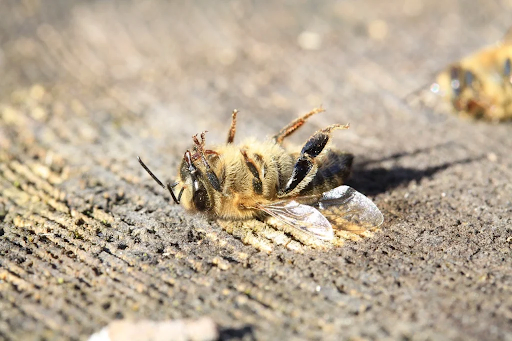Doctors claim that the symptoms of omicron and its subvariants are identical. They are all still COVID-19 and still capable of causing serious illness.
The coronavirus omicron variant was discovered for the first time in late 2021. Since then, it has spread around the world, eventually displacing previous variations like delta.
Omicron quickly split into several subvariants, with BA.2 taking off in the spring and BA.5 taking over by the end of the summer. The subvariants B.Q.1 and B.Q.1.1 collectively took over as the main strain of the virus in the US in the late fall.
They are not the only omicron subvariants; there are also XBB, BF.7, and yes, even BA.5.
Do they, however, lead to more serious illness?
Here are the opinions of specialists on the illness symptoms brought on by the most recent omicron subvariants.
What signs or symptoms might an omicron subvariant have?
The latest omicron subvariants’ symptoms are generally the same as those of the original omicron.
According to Dr. Roy Gulick, director of infectious diseases at Weill Cornell Medical Center and NewYork-Presbyterian, the omicron subvariants typically cause the following symptoms:
- unwell throat
- squeaky voice
- Cough
- Fatigue
- nasal clogging
- clogged nose
- Headache
- muscle pain
Omicron and its subvariants typically produce more upper respiratory symptoms than older variations like delta, which damage the lungs, according to Dr. Armando Meza, director of infectious diseases at Texas Tech University Health Sciences Center in El Paso. Congestion, a sore throat, and modifications in taste and odor are some examples of these symptoms.
The Cleveland Clinic’s Dr. Joseph Khabbaza, a pulmonary and critical care physician, said symptoms can be hazy, just like they are with any flu-like infection.
However, it is essentially impossible for people to self-diagnose an illness based just on their symptoms. Doctors advise anyone experiencing any cold- or flu-like symptoms to be tested.
Meza pointed out that when patients take Covid tests, the tests don’t check to see which type they have.
“We assume that the variant that they got infected with is the most prevalent variant in the community,” he said. “There shouldn’t really be much of a difference between them in terms of [symptoms] that you can distinguish one from the other. You only truly notice the tiny difference after the fact.
Are the omicron subvariants protected by the vaccine or booster?
The Food and Drug Administration granted approval for a novel COVID booster in August that specifically targets the spike proteins of the BA.4 and BA.5 subvariants. This supplement also targets the virus’s initial strain, which was discovered for the first time in Wuhan, China, in late 2019.
Everyone 6 months of age and older has been given permission to use the upgraded booster as of December.
People who had received their Covid immunizations in the past experienced a milder sickness from the variation during the first omicron wave.
The new bivalent booster was shown to be more effective than the initial booster doses at avoiding symptomatic Covid infections, according to research from the Centers for Disease Control and Prevention published in November.
The modified boosters are more effective than the initial booster at preventing hospitalization, particularly for individuals 65 and older, according to later CDC study.
Do the severe illness-causing omicron subvariants exist?
According to Meza, Omicron and its subvariants have often resulted in less lethal infections than earlier versions, particularly when compared to the delta variant and the virus’s original strain.
According to specialists, the virus may not tend to penetrate the lungs as deeply as prior forms but instead stay higher up in the respiratory tract, which may account for some of the drop in severity.
According to Dr. Hugh Cassiere, the director of critical care services for Sandra Atlas Bass Heart Hospital at North Shore University Hospital on Long Island, New York, the condition may manifest in a manner more akin to bronchitis than pneumonia.
Patients with acute bronchitis typically do not experience shortness of breath. They frequently cough and create phlegm, according to Cassiere. Patients with pneumonia typically experience more weariness and shortness of breath than people with bronchitis in general.
According to Khabbaza, recent Covid instances he has encountered in the ICU have been less severe than those he saw earlier in the pandemic: Patients haven’t required to be on oxygen for as long, and they have spent less time in the hospital.
Increased previous immunity is another element that could contribute to lower severity. People are also getting ill less because their immune systems have already caught it, according to Khabbaza.
When do the symptoms of omicron subvariant begin?
According to the Centers for Disease Control and Prevention, the time it takes for an infected person to experience symptoms following an exposure is less for the omicron version than for earlier forms – from a full week down to as little as three days or less.
The most recent wave of subvariants still seems to support that.
Most patients arrive with three to four days of incubation, according to Meza.
According to a number of factors, such as age, underlying health issues, and vaccination history, the incubation period may be shorter or longer, according to Dr. Anita Gupta, an anesthesiologist and critical care physician at Johns Hopkins University School of Medicine: “This is not a set rule at all.”
In reality, the onset of symptoms earlier after infection may be influenced by preexisting immunity. This is due to the possibility that symptoms may be brought on by immune cells combating the virus rather than the virus itself.
It’s almost as if you have an army of immune cells ready to pounce once the virus enters you now that the majority of us have had some combination of vaccination or infection that our immune system has seen, according to Khabbaza.
How long do the symptoms of omicron subvariant persist?
Covid symptoms earlier in the epidemic could linger.
Dr. Rahul Sharma, the director of emergency medicine at NewYork-Presbyterian/Weill Cornell Medicine, stated that many of the patients he treated during the 10 to 12 days when there were no vaccines did not exhibit any symptoms.
According to Sharma, those who have had vaccinations generally experience symptoms that are milder and last less time than those who have not.
According to Sharma, the omicron subvariants also often result in shorter hospital or emergency department stays for vaccine recipients.
What I can say is that our sicker patients are undoubtedly those who are not immunized, Sharma added. “Those patients are more likely to be admitted to the intensive care unit. These patients have a higher chance of being admitted to the hospital.
The vast majority of Covid patients he sees in the intensive care unit are unvaccinated, according to Dr. Ryan Maves, an infectious diseases and critical care physician at Wake Forest University School of Medicine in North Carolina.
When should I undergo a Covid test?
Infectious diseases specialist Dr. William Schaffner of Nashville, Tennessee’s Vanderbilt University Medical Center recommended being tested 72 hours after coming into touch with an infected person.
“If you have been exposed and are wondering, ‘When should I be tested?’ I believe it would be preferable for you to wait at least three days to see if you have turned around, he advised.
The CDC advises delaying testing for at least five complete days if you have been exposed to someone who has Covid but is asymptomatic.
How long do I retain an omicron subvariant’s contagiousness?
A person is typically contagious for at least two to three days after the onset of symptoms and for a day or two before. Contagiousness should then start to decline as the immune system begins to function.
The CDC advises isolation during the first five days of a moderate Covid sickness in order to prevent infection spread. Wear a mask with other people for the following five days if you are no longer experiencing symptoms.
You can remove the mask before day 10 if you test negative on two consecutive fast tests that are spaced 48 hours apart, according to the CDC.
Could an omicron subvariant infection result in extended COVID-19?
Some scientists predicted that the variation could cause lengthy Covid even in mild cases during the first omicron wave. Despite the fact that all 41,361 adult volunteers who frequently reported their Covid symptoms on a phone app had received the vaccination, British researchers found in a study published in June that the omicron form seemed to have a lower propensity to generate long-lasting Covid symptoms than the delta variation.
Months after their first COVID-19 infections, patients with long-term symptoms may still experience excruciating weariness, abnormal heartbeats, and other problems. That happened during the pandemic’s initial wave, and it continued to cause ongoing Covid problems during the delta wave.
According to an earlier study, vaccination can lower the risk of long-term COVID-19.





